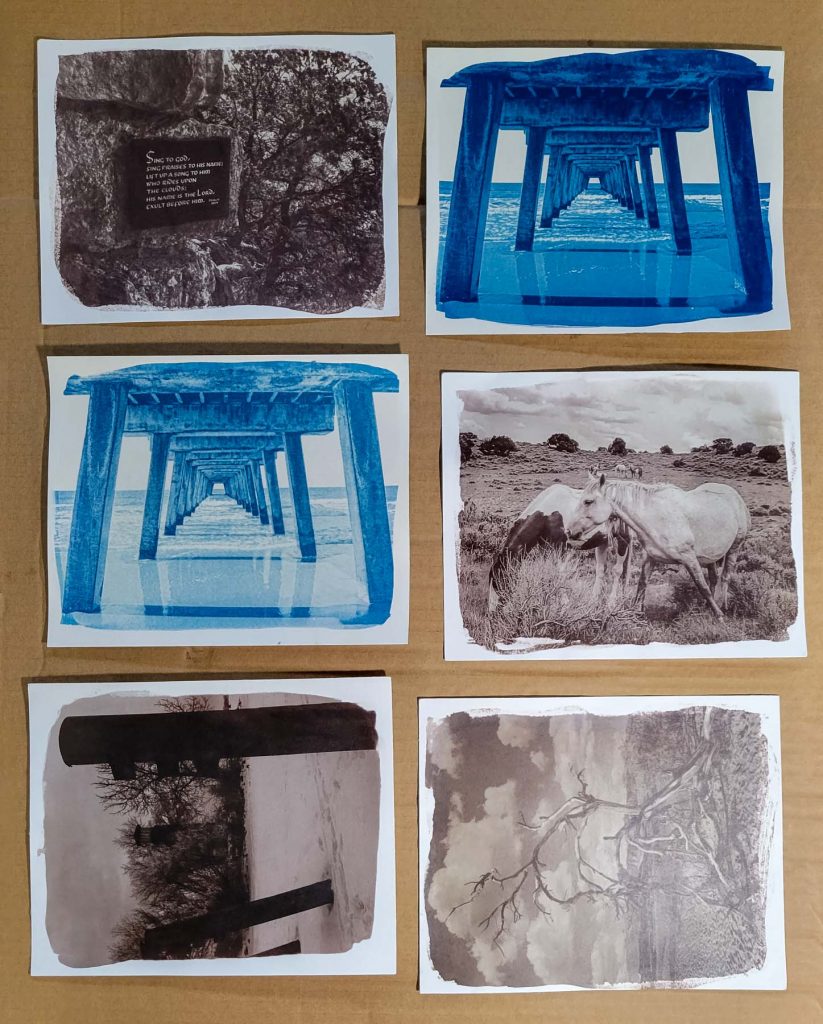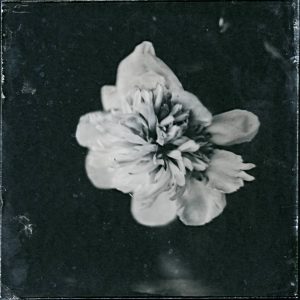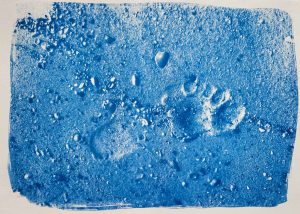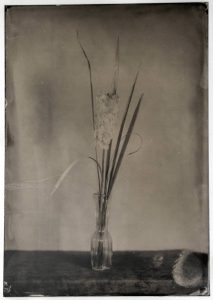
Waxing alternative prints to protect them is a critical step in my production process. I use archival quality paper and methods to make the prints last beyond a lifetime and the final step is just another layer of protection.
There are two types of prints here, salt prints and cyanotypes. Let’s talk about cyanotypes first. The deep blue colors of cyanotypes are from ferrous (iron) ions in a 2+ oxidation state. This “Prussian Blue” dye is caused by sunlight and the interesting thing is that if cyanotypes ever “fade” they can be regenerated by putting thin in the sun for a while. So cyanotypes are for all practical purposes permanent. They will last as long as the paper they are printed on. For more than you probably want to know on cyanotype chemistry see Cyanotypes.
The chemistry of Salt Prints is a bit more complicated. Basically paper is coated with sodium chloride, dried, and then silver nitrate. The silver nitrate reacts with the chloride to form light sensitive silver chloride. When exposed to light the silver chloride forms solid silver. The print is washed and “fixed” to remove unreacted chemicals. I use archival quality paper and a rinsing and toning process to make the silver last as long as possible. But, salt prints can fade with time. Strong sunlight can be especially damaging to salt prints. There are 170+ year old salt prints still around so the process is “archival” if care is taken.
I do a final protection step for both types of prints by coating them with bees wax and lavender oil. This is the traditional preservation method and has been validated by over 100 years of experience.
Of course, the best part is how wonderful my house smells after a waxing session – just like a summer field of lavender!



